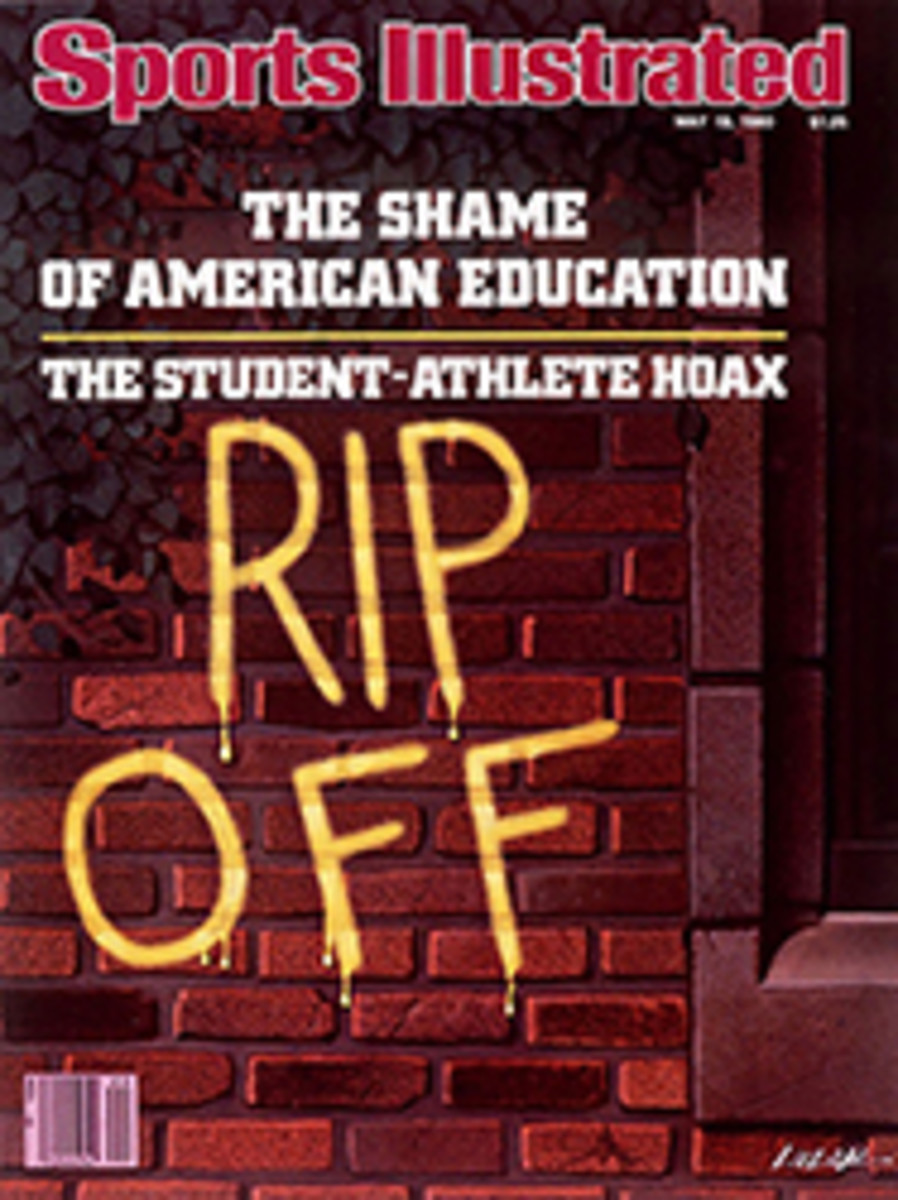
TO SPRAY OR NOT TO SPRAY. THAT MAY BE THE QUESTION FOR OREGON VOTERS
In November there may be an initiative on the Oregon ballot to ban the aerial spraying of certain herbicides on state and privately owned forest lands. Residents of southern Oregon's Applegate River Valley believe that there is a link between the herbicides—used to kill undergrowth that competes with young Douglas fir—and both miscarriages and babies born with brain defects. Drs. Renèe Stringham, John Farquhar and Jim Scott, sponsors of a petition to get the initiative on the ballot, need the signatures of 54,669 registered Oregon voters by midsummer.
The initiative is an upshot of discord this spring between a growing number of Valley residents and the Federal Bureau of Land Management. In April the BLM sprayed sections of the area with the herbicides 2, 4-D and atrazine, and the protestors, calling themselves the Applegate Occupation Team, tried to get the spraying stopped.
One of the leaders of the anti-herbicide forces is Bernie Bernstein, 61, a retired real-estate agent from New York who left the city and eventually ended up in Yachats in Lincoln County on the central Oregon coast. Ironically, it was the use of herbicides in that county that prompted him to move to the southern part of the state, where he is now part owner of a trout farm. It is Bernstein's unshakable belief that herbicide spraying will contaminate his water supply and pose a serious health threat to him and the other area residents.
When he learned last January that the BLM planned to spray timberlands in the Applegate River Valley, Bernstein filed an appeal with the Department of the Interior's Board of Land Appeals in Arlington, Va. When the BLM decided to go on with the spraying before the appeal was resolved. Bernstein decided to resist.
He believes in peaceful civil disobedience and constantly reminds his followers that there must be absolutely no violence in their protest. As an alternative to the spraying, he and other members of the Applegate Occupation Team offered to cut brush and grass by hand at the spray sites for the next three years, at no cost to the BLM. "We can do a better job than they can," Bernstein argues, "and it won't cost them a cent." George Francis, district manager of the BLM, turned down Bernstein's offer, calling it untested, but groups of protestors began work at two of the timber units anyway.
Francis represents an agency that was created in 1946 and is charged with, among other things, ensuring a permanent source of timber through controlled harvest and reforestation. Herbicides are regarded by the BLM as necessary tools in accomplishing this end, and as might be expected, the private timber interests that cut the trees on BLM land and the chemical industry that manufactures herbicides support this view.
Neither the BLM nor the chemical companies dispute the fact that 2, 4-D and atrazine—and all other herbicides—are toxic. But they do claim that, when used properly, the herbicides aren't hazardous to humans. And they argue that evidence to the contrary is not strong, even though the Lincoln County Medical Society recently requested a ban on herbicide spraying in the area after reviewing the effects of 2, 4-D on animals. In addition, physicians Renèe and Chuck Stringham have identified an epidemic of brain defects among infants in the county. Herbicide proponents argue that there is no hard scientific evidence that relates any of the brain-damage cases to herbicide use.
A major study of the long-term health effects of chronic exposure to 2, 4, 5-T was conducted on production workers at the Monsanto Company's Nitro, W. Va. plant, where 2, 4, 5-T was manufactured from 1948 to 1969. (Herbicide 2, 4, 5-T is a cousin of 2, 4-D and the two are components of Agent Orange. The registration of 2, 4, 5-T for use on forest land was suspended by the EPA after reports of unexplained miscarriages surfaced in an Oregon spray area.) The Monsanto plant survey was sponsored by the United Steelworkers union and conducted by the Environmental Sciences Laboratory at Mount Sinai Medical Center in New York City. The results are being analyzed and will soon be available.
Despite the unsettling evidence, the BLM moved forward with its program to spray 2, 4-D in the Applegate River Valley, and protestors continued to resist. In southern Oregon this spring, snow, rain and wind forced the BLM to drag out over a period of weeks a spraying program that would normally have taken only days to complete. The situation resulted in confrontations, demonstrations, arrests, charges and countercharges.
On March 14, the day before the BLM was scheduled to begin its spraying, Bernstein was arrested on trespassing charges when he refused to leave the Bureau's building in Med-ford at closing time. He was jailed for the night and released.
Bad weather delayed spraying for a week. Then on March 21, after a demonstration, Bernstein and 10 other herbicide opponents were evicted from the BLM headquarters by police. They had offered themselves for arrest, but instead were merely given citations. Once outside the building, many tore the citations to shreds and burned them.
The protestors then changed their tactics, concentrating on what they called the Applegate Occupation Effort. Hoping it would halt the spraying, they occupied the forests on which the herbicides were to be used. Ron Cameron, a worker on an organic farm near Grub Gulch, one of the spray sites, estimated that as many as 100 people opposed to the BLM were involved in the protest.
The occupation of the spray sites, along with more bad weather, led to another spraying postponement that lasted until April 1. At 9:30 that morning, Mike Cataldo, a helicopter pilot, sprayed 95 acres along Grouse Creek with 2, 4-D.
Sheila Jenkins, one of the protest organizers, claims that at least 15 occupation-team members, Bernstein among them, had been in the timber unit at the time of the spraying. "They intentionally sprayed our people," Jenkins says. But the BLM contends that their observers did not see anyone in the spray area.
According to Jackson County Sheriff's Deputy Dennis Daley, the protestors had been warned to leave the area. He says that it was obvious that the BLM was going to spray, and that if the protestors really believed what they said about herbicides, they would have cleared out.
"They were trespassing," Francis says. "That unit was closed to the public."
"George Francis and Wayne Boden [the assistant district BLM manager] promised there would be no application if people were in the spray area," says Bernstein, who believes as many as eight people were sprayed.
On April 7 Bernstein requested separate jury trials on his trespass charges of March 14 and 21. On the larger issue, Bernstein conceded defeat. "They've got all the resources, the manpower and the police," he said. "All we've got is the truth."
But things have changed since then. Three of the six Applegate timber units that had been periodically occupied by protestors were sprayed in April, but in late April the BLM canceled plans to spray the other three.
The Grub Gulch site has been set aside by the BLM "for study" because protestors have cleared vegetation with hoes and chain saws. The day after the BLM announced the cancellation of the remainder of its spring spraying program, a representative of the Oregon Department of Agriculture and the Federal EPA came to the nearby town of Ruch to interview the protesters who claimed to have been sprayed with 2, 4-D on April 1.
Bernstein experiences periods of illness that he attributes to the spraying. But he thinks that now the protest movement will grow. The protestors are hoping to open a permanent office, and the group has now adopted Applegate Occupation Team as a legal business name. And, of course, it has gotten into the legal business of getting an antispraying initiative on the ballot.

